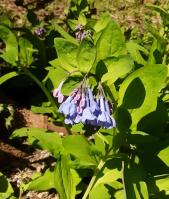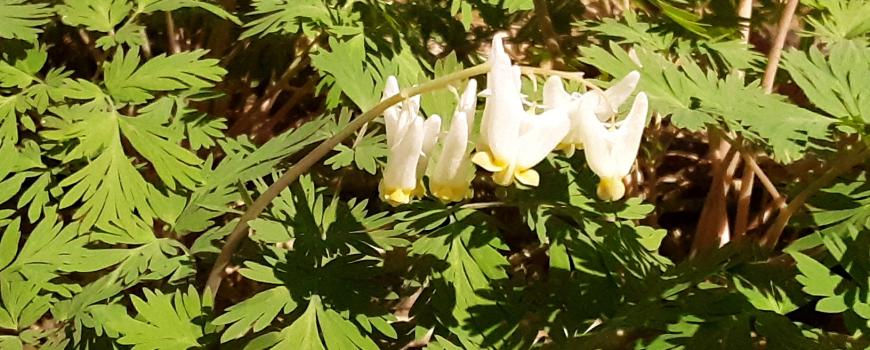
After a slow start, spring ephemeral season is moving very quickly now. Bluebells are finally beginning to bloom, and Dutchman's breeches are just about at their peak along with cutleaf toothwort, spring beauties, and violets. The last of the twinleaf blooms are fading, and the pipe-shaped seed pods are swelling. Two deep red beauties, sessile trillium (aka toadshade) and wild ginger are blooming. It's easy to overlook the wild ginger - the three-part flowers are tucked underneath the large leaves to protect pollen from wind and rain which have been abundant in Dayton the past two days.
This is a similar strategy to that of mayapples, which are yet to bloom, but a very different strategy from the trout lilies. They are in peak bloom right now and produce more pollen grains per anther than just about any of their spring-time peers atop erect and very visible flowering stalks. But even they keep their blooms nodding downward as if to turn their faces from the unpredictable weather. Still, only about 10 percent of flowers get pollinated in any given year. They tend to rely more on asexual reproduction via bulblets, forming colonies that can live for hundreds of years.




